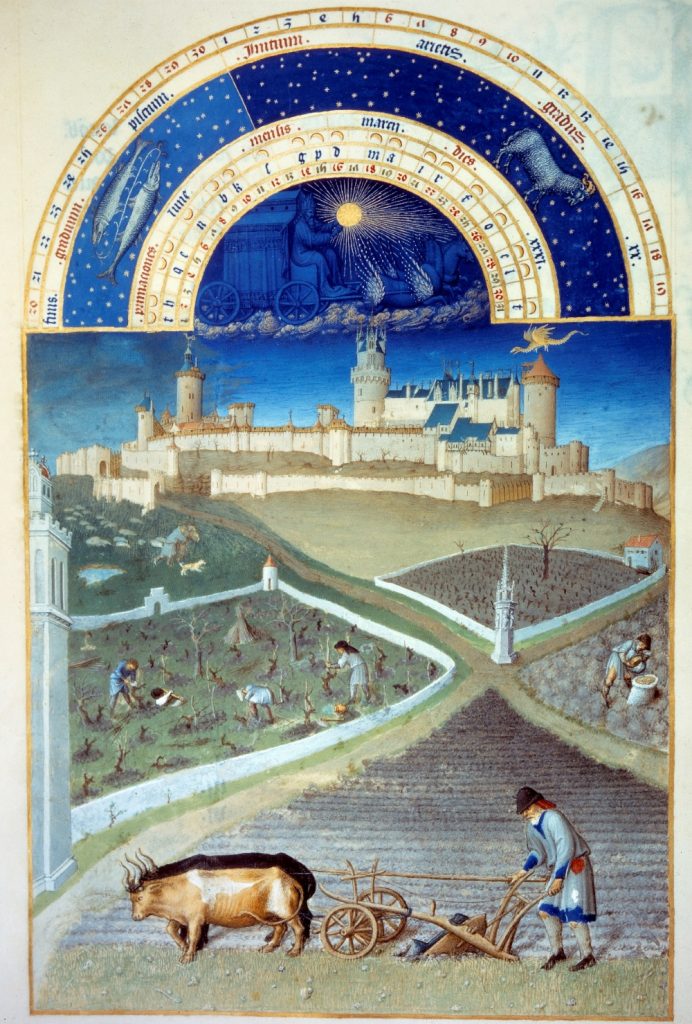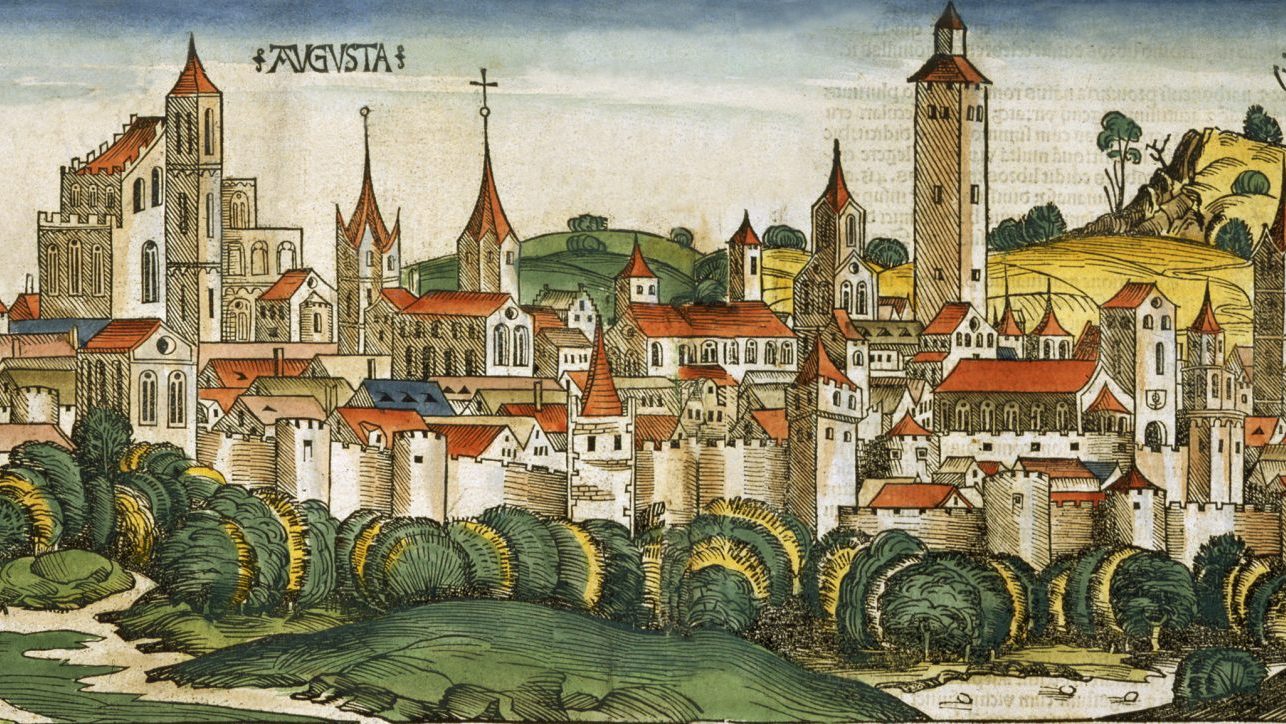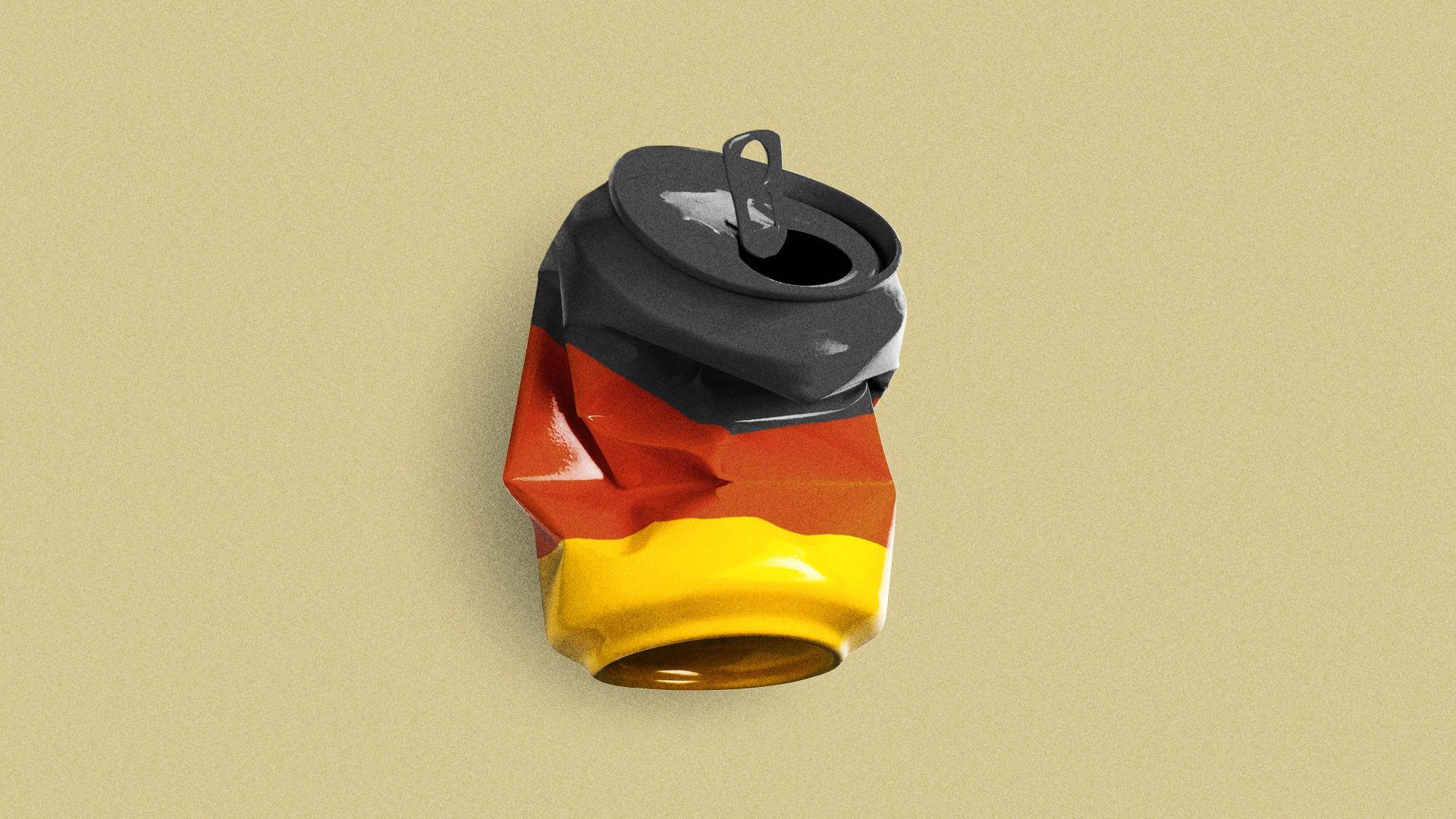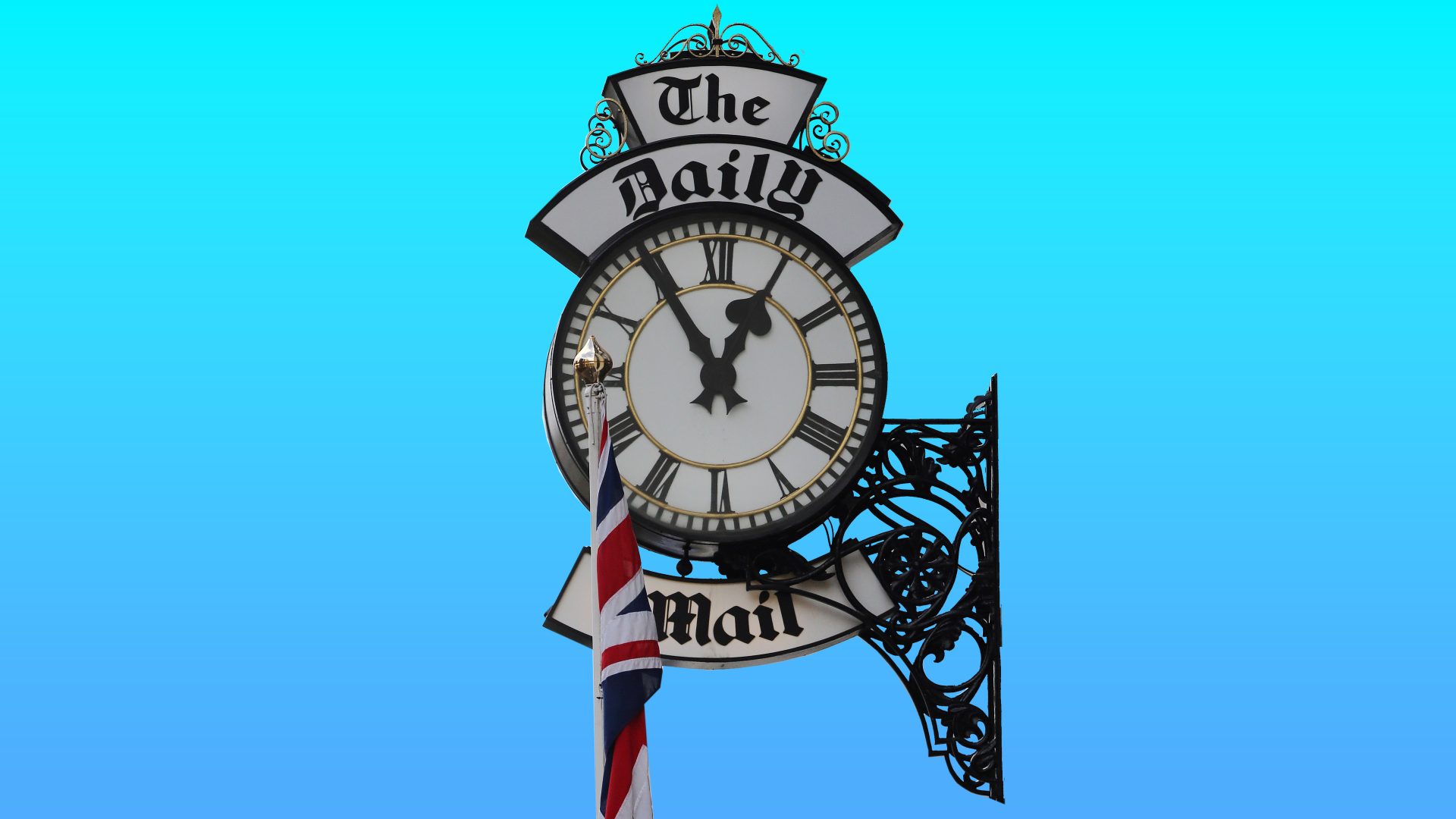In 1965, the historian Hubert Lamb noted that evidence had been “accumulating in many fields of investigation pointing to a notably warm climate in many parts of the world, that lasted a few centuries around AD1000–1200”. His proposed name for this period, the Medieval Warm Epoch, has since been modified and is now usually referred to by scholars as the Medieval Climate Anomaly or the Medieval Warm Period. Some too have pushed at the dating boundaries, arguing that the period of long-term generally warm climate conditions in fact dates from c.800 and lasted until 1200 or even 1250.
From a European perspective, this was a time of favourable weather patterns which ensured that atmospheric circulation in the North Atlantic was a reliable source of warm, dry air which in turn resulted in a reduction in the number both of wet and cold summers and of bitterly cold winters. This created ideal conditions for agriculture, generating good harvests, inflicting few shocks and, perhaps best of all, providing a climatic context that was reliable and stable. Of course, temperatures and rainfall levels do not remain constant or benign; nor does it mean that there was coherence or consistency across Europe as a whole – something that is in any event difficult to assess given that considerably less attention has been paid to the south and the east of the continent than to the north and the west.
The benign climate conditions that favoured Europe had different consequences for other parts of the world, although it is important to note important regional variations. For example, while rainfall in Iran, Armenia and Palestine was significantly below average for much of this period, there is little evidence that this was true of northern Syria or of western or central Anatolia. Climate impacts varied from region to region, even over relatively small areas – as was the case in what is now Bulgaria, central Greece and western Asia Minor, which do not show uniform precipitation patterns in the early Middle Ages.
Tree-ring data from Central Asia, combined with reconstructions of the Aral Sea salinity, point to the climate being cold and dry, especially from around 900 onwards. This chimes with evidence from the northern parts of China, though the rising cultivation of citrus trees and subtropical plants in Henan province to the south provides a reminder that experiences were not only different but could be sharply contrasting. More detailed and more recent surveys drawing on peat cellulose, stalagmites, ice cores and tree rings show that many parts of what is now China were generally warmer and wetter than average during this long period. Taken as a whole, however, six of the ten warmest decades globally of the last millennium were clustered in the period 950–1250.
These changes have been linked by some scholars to large-scale shifts in the El Niño–Southern Oscillation (ENSO), the Atlantic Multidecadal Oscillation (AMO) and the North Atlantic Oscillation (NAO). Others however have suggested that they were driven by high levels of solar irradiance and low levels of tropical volcanism. As such, reduced volcanic activity and variability of the ocean-atmosphere system appear to have been the main motor of what was a major global climate reorganisation.
In the southern Mediterranean, changes were modest. The eastern parts of the Roman empire that had survived the Arab attacks had regrouped. Characterised by centralised control of Constantinople and a bureaucratic, military and religious apparatus which sustained integration as well as a common Roman identity now went through a period of contraction where cities became smaller and networks less vibrant. Exchanges between the Middle East, Levant, North Africa and Spain were based on a similar model of political structure that provided protection of property rights, administered justice and collected taxes. The difference was one of scale, with cities like Damascus, Cordoba, Fustat and many others being both larger and more numerous than those in the Eastern Roman or Byzantine world that was centred on the Aegean, the Balkans and Greece.
Both stood in sharp contrast with western and northern Europe. There, the decline and fall of Rome brought about fragmentation and atomisation. There were brief spells of consolidation, most notably during the reign of the great ruler Charlemagne who succeeded in uniting much of what is now France, the Low Countries, Germany and northern Italy into a single realm. The high water mark came with Charlemagne’s coronation as Emperor of the Romans by Pope Leo II on Christmas Day in 800. This was a brief and exceptional moment in what was otherwise a period of almost no long-distance trade and a narrowing of horizons that lasted for hundreds of years.
Rather than the romantic figure of Charlemagne, who became a totemic symbol for those keen to provide a reference point for ideas about European unity, the regional emporia of Comacchio and Torcello in Italy, Verdun in France and Birka in Scandinavia were better examples of reality. Curiously, each was set in locations that were ecologically marginal and geographically peripheral; but more importantly, each was a trading zone that was an internal market, where commerce took place between local producers and local consumers rather than with those of other regions.
This in turn provided a setting for a very different form of social and economic development. In the absence of a sophisticated bureaucracy, a new baronial class emerged in western Europe that was able to establish authority over both the labour force and over productive land. The magnates faced challenges from each other, of course, as well as from other competitors – namely the Church, which built up extensive landholdings and sought to protect and maximise its own socio-economic and political position. Together, these represented a superclass of dominant individuals, families and landowners who sought to concentrate power in their own hands, and retain it within kinship groups closely related by marriage or in institutional ownership that kept assets away from the king.
Ideas about the “feudal revolution” that were commonplace a few decades ago have been replaced by much more sophisticated interpretations, many of which emphasise the variety and importance of other participants in early medieval society in western Europe – such as guilds, urban groups, parishes, regional assemblies and universities. Some commentators have also stressed that the initial weakness of property rights spurred innovations over time in the formalisation and consolidation of power as aristocrats built up assets and status that ultimately proved transformational. The evolving role of the Church, as the recipient of endowments and distributor of alms, patronage and influence, was also a significant factor in social, institutional and ecological change.
The consequent transformation of both human societies and the natural environment in the early Middle Ages was so profound that some scholars have talked of this period as being the time of “the most significant agricultural expansion since the Neolithic”. The role of new technologies in driving yields and production has long been emphasised by medieval historians. Particular attention has been paid to the importance of horse collars and to the development of heavy ploughs that were much more effective in turning the heavy clay soils of northern Europe. These improved weed control, enhanced drainage and had the twin effect of boosting yields and requiring less work by farmers, thereby freeing up time and resources that could be allocated to other activities. The breaking up of larger estates into smaller units resulted in important social change, altering perceptions of the land and landscape for the peasantry as well as for the emerging baronial class.
What was most important about the uplift in agricultural productivity was its relationship to urbanisation: by improving per capita income and spurring the development of transport and commercial networks, the changes in the agrarian economies of western and northern Europe set off a chain reaction that led to the growth in size and number of towns. This in turn encouraged specialisation and cultural experimentation and resulted in further migration from the country to urban settlements – and drove cycles of dynamic growth.

The rise of towns and cities – and the regular arrival of newcomers and strangers – had profound effects on urban cultures as well as on those who lived in the countryside, with new customs, ideas, fashions and tastes producing an explosive transformation of Europe. As long-distance trade networks developed, intellectual, cultural and geographic horizons expanded too, typified by concepts like pilgrimage to Jerusalem, a journey that was long, expensive and often risky, but that gave considerable kudos to those who were able to visit the sites where Jesus Christ had lived, died and risen from the dead.
Ideas about nature also evolved, as did concern about competition for resources that varied from region to region; these ideas were evidently influenced by changing lifestyles, as well as by engagement with flora and fauna. Concepts of the natural world could be ambiguous: as one leading historian has pointed out, growing one’s own food in early medieval Italy “was both a necessity and a luxury”.
For some scholars, however, climate shifts provide an invaluable key to help understand the early Middle Ages. It has been suggested, for example, that warming was at least a contributing factor in the move of the Bulgars into the Middle Volga region from around AD 800, as it was in the establishment around this time of the Volga Bulgarian state, which opened up trade routes fanning out to Scandinavia, Byzantium, the Middle East and Central Asia.
These networks spread goods as well as ideas and religions: when the Arab envoy Ibn Faḍlān visited the Volga Bulgars just over a century later, he reported that the ruler presided over a court complete with elaborate rituals, and with expensive materials and goods on display that had come from Constantinople and Baghdad – although he was unimpressed by the incomplete understanding of Islamic teaching.
Journeys to the east were mirrored by those heading both south and west. New evidence based on mammal faeces, pollen samples and charcoal analysis suggests settlement of the Azores by Scandinavian peoples – which has been linked to anomalous winds and warmer temperatures in the northern hemisphere. The expansion of Scandinavian peoples across the North Atlantic into the Faroe Islands, Iceland and Greenland in the ninth century has also been strongly linked to the retreat of the polar ice cap that allowed ice-free sailing, to the northerly migration of fish stocks and to the emergence of favourable growing conditions on land. Such colonisation was not easy, for it involved not only a jump into the unknown but also leaving families and friends behind. A major eruption of the Hallmundarhraun volcano in Iceland around c.900 must have been unsettling and inspired at least some settlers to build an enormous boat-shaped structure in a 1,600-metre-long lava cave in the interior, with animals including sheep, cattle, horses and pigs apparently sacrificed as burned offerings to appease pagan gods.
This was just one of dozens of eruptions in the period c.850–c.1250, with some – such as the Eldgjá volcano in 934 – proving particularly damaging to flora and fauna alike.
Perhaps not surprisingly, it was mainly men who set out in the first waves of colonisation. Although Y-chromosomal and mitochondrial DNA (mtDNA) evidence suggests that Norse women were involved in expansions to the Shetlands, Orkneys and northern parts of Scotland, genomic data reveals that in Iceland most settlers were lone men who brought enslaved women from the British Isles to satisfy their sexual desires through rape and coercion. Some made it as far as North America to the L’Anse aux Meadows site in Newfoundland, although the settlement proved unsuccessful.
Advances in dating techniques allow us to know that a Scandinavian community had become established by 1021 – when trees were cut down with metal blades used by Vikings, but not by indigenous peoples.
Trade between new colonies in the North Atlantic and Scandinavia was primarily centred around low-bulk, high-value prestige goods that could be sold back home for rich rewards, most notably walrus hides and ivory tusks. That produced problems of its own, with Iceland evolving into a society that was dominated by those who had arrived first and built up the best and largest landholdings; by the mid-tenth century, it was “over-chieftained” – one reason why the national assembly, the Althing, was established, with the earliest laws concerned with protecting landholdings from new arrivals and landowners from each other. There were creative efforts to correct the manpower shortage, with texts like the Íslendingabók setting out how Erik the Red was able to tempt others to journey to Greenland with an astutely judged sales pitch that spoke of verdant and abundant land and of limitless opportunities that this auspiciously named island offered.
The expansion from Scandinavia into the North Atlantic was part of a wider intensification not only of regional trade and knowledge networks, but of long-distance trade too – most notably to the east and to the south that in turn brought enormous volumes of silver coinage into circulation first in the Nordic and Baltic lands and then elsewhere. These activities, coupled with human interventions in the landscape such as building new settlements, farming and rearing domesticated animals, changed ecosystems – as did the hunting of animals for food and trade. One outcome was a world of plenty – and of equality: while evidence from Roman sites suggests men ate 50 per cent more protein than women, in Scandinavian societies in this period women and girls had access to the same food sources as men and boys and had better health outcomes as a result. Some scholars have even suggested that this may help explain why there are such high levels of female autonomy and gender equality in contemporary Scandinavia.
The impact of human activities in geographically constrained locations with finite resources could be severe: within decades of the first settlers arriving in Iceland it is possible to detect soil erosion and deforestation that continued for several hundred years before long-term conservation practices were adopted. Genomic analysis, combined with radiocarbon dating and use of written sources, shows that the local population of walrus was wiped out soon after the Norse settlement in Iceland, with overhunting the most obvious cause of extinction – even if warming climate and volcanism may have been additional stress factors.
The pressure on managing resources led to shifts in consumption patterns, such as in Iceland with deliberate moves away from pigs and cattle to sheep, whose rising numbers may be explained also by attempts to produce wool for domestic use and for export. Isotope data shows that adaptation in Greenland led to terrestrial meat-based diets being replaced over time by reliance on marine protein sources.
In other words coping strategies were needed not only at times of climate shifts, but also to manage the consequences. The favourable conditions and material incentives that opened up routes between Scandinavia and the North Atlantic led to different sets of questions that were part of a constant negotiation and renegotiation between human agency and the natural environment: the arrival of any animal or plant species could have major ecological consequences. It just so happened that humans brought cascades of change in their wake as a result of interventions in the landscape: the need for settlement, food, water and other resources meant that human impact on ecosystems was profound. Plants and animals that were brought by humans, deliberately or otherwise, were part of a “natural” set of changes that had anthropogenic causes – such as weeds, seeds and parasites that were carried in the guts of pigs, or plants carried for food, for planting or simply as insulation or packaging that then took root in a new ecological setting. These outcomes, sometimes referred to as human ecodynamics, are particularly clear with the occupation of previously uninhabited locations that are then occupied and transformed by human settlement.
Taken as a whole, the period c.800–c.1250 was one of profound intensification of connections – within interlocking and interdependent worlds in Asia, Africa and Europe, or within communities in the Americas which emerged as central if independent hubs that had little or no interaction. It was hardly the case that this long time-frame provided conditions of peace and harmony that enabled relentless economic and demographic growth: in fact, one could argue the opposite was the case, as empires and dynasties rose and fell, states fought, were subsumed by or conquered each other or faded into obsolescence as new competitors emerged who could supply goods more quickly and more cheaply.
Nevertheless, as with other periods, it is hard to escape the fact that the fundamentals of ecological equilibrium and environmental sustainability underpinned the cultural, political, socio-economic, diplomatic and military histories of individual kingdoms, states or regions. Reliable food and water supplies were central at all times, but especially during periods of demographic expansion. Societies had to contend with finite natural resources; when those became exhausted or came under stress because of over-exploitation, because of shifts in rainfall patterns or because of conflict, disease or the failure of infrastructure such as river defences, disaster soon followed. That provides some food for thought for the present and future – as well as the past.
An extract from The Earth Transformed by Peter Frankopan, published by Bloomsbury.



